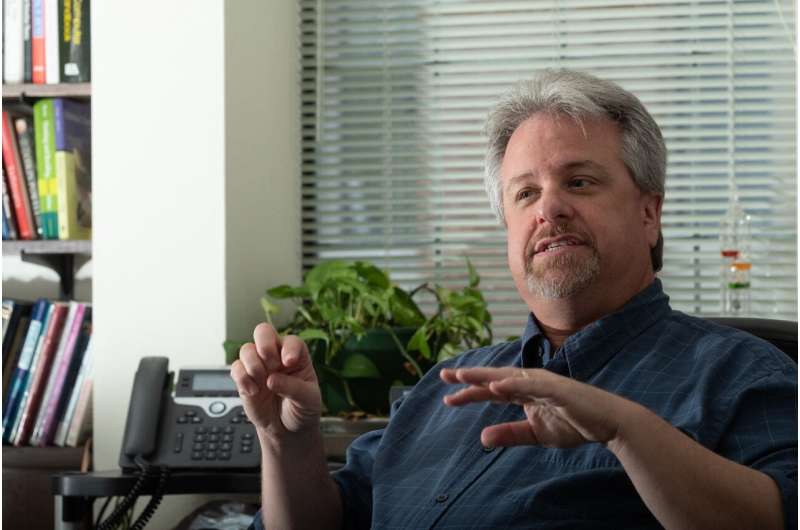Mike Byrne. Credit: Jeff Fitlow
In 2000, the infamously confusing butterfly ballot led many voters in Florida's Palm Beach County to mistakenly vote for the wrong presidential candidate, altering the outcome of the election—and American history.
Twenty years later, despite decades of discussion about election integrity, not much has been done to ensure that votes are accurately recorded, according to Mike Byrne, a professor of psychology and computer science at Rice University and an expert in human factors psychology.
"Voter intent means nothing if it isn't transferred to the actual ballot," Byrne said. "When voting mistakes are made, it means the election isn't correctly measuring what voters really want. And a badly designed ballot can be the culprit for these voting errors."
However, Byrne plans to address the problem with a $500,000 research project funded by the National Science Foundation. His ultimate goal: Detect bad design before ballots ever reach the voting booth.
Byrne realizes this may seem like a daunting task, since election regulation is delegated to the states and most of them assign the responsibility to counties. And there are 3,007 county governments in the U.S.
"A good usability expert could review a ballot and be able to determine that it won't work," Byrne said. "The problem, of course, is trying to deploy this system across all the counties. It would be impossible. Usability testing just doesn't scale up."
Byrne's alternative is to build a computer system that can act as a usability expert and analyze a ballot with a scanning system to determine if its design will cause problems for voters.
The project marries his two areas of expertise: computational modeling and the human factors of voting. It will include eye-tracking experiments to detect how voters look at a ballot, examination of different ballot layouts and identification of the strategies used to vote. He will build what he learns into the computer's design.
At the conclusion of the three-year project, Byrne hopes the computer system will be widely embraced by election offices across the country. He knows the project's ultimate goal is ambitious, but he and his research team have already made progress on understanding different voting strategies. A number of preliminary models are up and running and the researchers have finished two eye-tracking studies, with more on the way.
"It's a challenge, but most important real-world problems are, and protecting elections is one that is definitely worth it," Byrne said.
More information: More information on Byrne's work is available at chil.rice.edu/.
Provided by Rice University






















